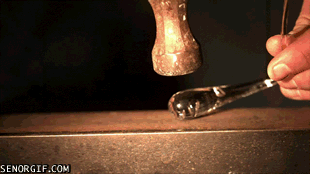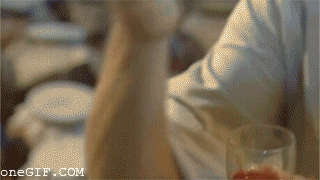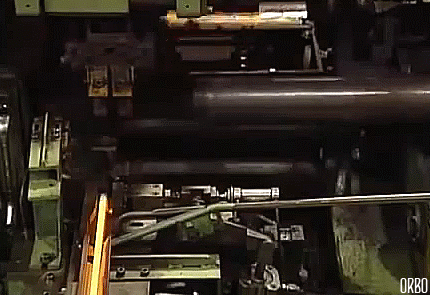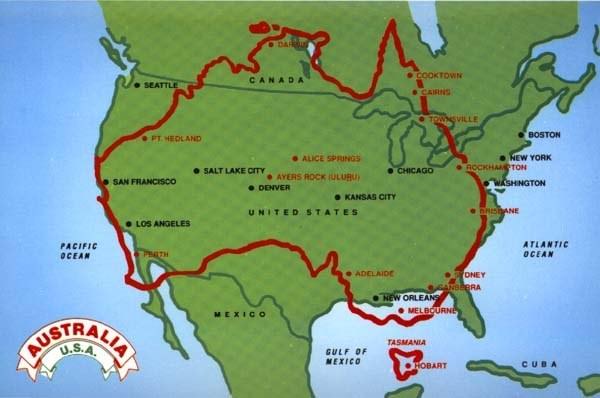
|
The mind is the most important muscle in the human body and should be regularly exercised. Learning new things can cause your brain to produce endorphins, making you happier. With that, I present to you 22 things you may not know, but would enjoy learning in this fun animated guide. |
|
1. What happens when you let go of a Slinky: |
 |
|
The reason the Slinky looks like it's suspended in the air is because it is. When you hold a Slinky in that way, there are two forces pulling it in opposite directions: gravity is pulling it down, and tension is pulling it up, keeping it temporarily suspended. |
|
2. What happens when you put tape on frosted glass: |
 |
|
Frosted glass is etched, so when light hits it, it bounces in different directions, scattering the image. When tape is applied to it, the tape fills in the etched gaps, making the glass clearer. |
|
3. Crying in space: |
 |
|
On earth, gravity pulls tears down your face, but in space they have nothing pulling them away from your eye, causing them to pool or float away. |
|
4. Automatic apple peeler, corer & slicer: |
 |
|
Science! |
|
5. Drawing the Mona Lisa with paintballs: |
 |
|
Built by Adam and Jamie from MythBusters to show the difference between how a single computer processor works, versus a multi-processor. This rendition of the Mona Lisa took 80 milliseconds to produce... |
|
6. How frost forms on a soap bubble: |
 |
|
If the temperature is cold enough, soap bubbles will visibly freeze in seconds. The low amount of liquid is affected much faster by the icy temperatures. |
|
7. How trains turn: |
 |
|
You will never find a railroad with corners - only curves. The reason is that the way trains are built, they cannot perform a turn that is too sharp. Instead, the wheels on the train are slanted, so when the train gets to a turn on the track - it "leans" into it, allowing it to turn. |
|
8. How glass shatters: |
 |
|
Glass is made of sand that has been heated to its melting point, then shaped into the desired shape. As such, it is brittle, so when enough force is applied to it, any microscopic impurities give out, making it shatter. |
|
9. An automatic paper airplane machine: |
 |
|
This is what happens when engineers have too much free time. |
|
10. What happens when a 2009 car crashes into a 1959 car: |
 |
|
Since the creation of the first car in 1769 (it was a steam-powered tricycle), automobile manufacturers have been building safer cars, meant to withstand high-impact collisions. As you can see in the animation above, 50 years make a real difference. |
|
11. An app that translates any text it sees: |
 |
|
The app is called "Word Lens", and it's free to download for Android and iOS devices. |
|
12. What a drop of snake venom does to blood: |
 |
|
Many snakes have special enzymes in their venom that are pro-coagulants, forcing blood to thicken and preventing it from moving in the cardiovascular system, thus killing the bitten victim. |
|
13. Shaking a tree loaded with pollen: |
 |
|
Trees can release pollen in-order to fertilize other trees as part of their reproduction cycle. Sadly, many people develop allergic reactions to this pollen. |
|
14. An app that solves math equations: |
 |
|
Photomath is a free app that can scan math equations and give you the answer quickly. (It's a math teacher's worst nightmare) |
|
15. Dropping things on the moon: |
 |
|
Moon's gravity is 83.3% lower than the Earth's. The lower gravity means that falling objects have less gravitational force pulling them down, allowing them to fall more slowly. |
|
16. How a tattoo looks in slow-motion: |
 |
|
Looks painful... |
|
17. Making chocolate bowls: |
|
|
|
It's that simple - just dip an inflated balloon in melted chocolate, let it sit and cool down, then just pop the balloon! |
|
18. A 3D metal printer: |
 |
|
As the 3D printing industry grows, more and more variations appear. This is the MX3D-Metal printer, it uses a computer program to set a path, then welds metal in the designed shape. It can print aluminium, copper, steel, stainless steel and even bronze. |
|
19. What a train-crash looks like: |
 |
|
This is what happens when a train moving at 100 mp/h crashes into a 50-tonne metal block... |
|
20. How springs are made: |
 |
|
Metal is heated until it is soft and malleable, then quickly twisted into shape. Simple, yet brilliant! |
|
21. Metal that melts in your hand: |
 |
|
Gallium is a metal with a melting point of 29.76 °C (85.57 °F), so if you hold it in your hand long enough, it will melt away... |
|
22. Australia's size, compared to the United States: |
 |
|
Australian and the contiguous United States (48 connected states) have a very similar area, with the U.S. being 7,664,000 square kilometers, while Australia's area is 7,692,000 square kilometers. |
| H/T: izismile.com |